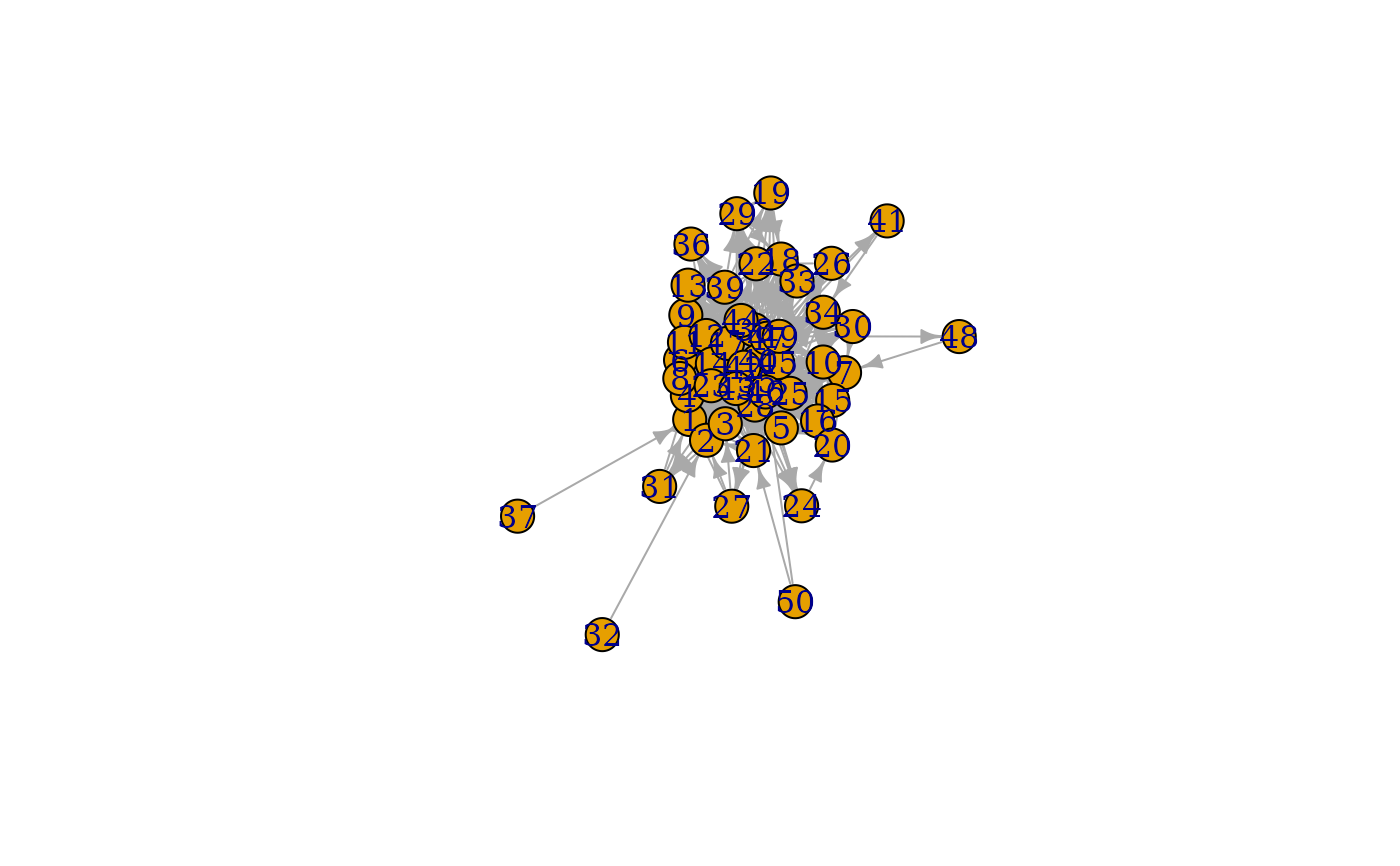This games create graphs through different types of evolutionary mechanisms (not necessarily in a biological sense). The nature of their algorithm is described in detail at the linked igraph documentation.
play_citation_age(
n,
growth = 1,
bins = n/7100,
p_pref = (1:(bins + 1))^-3,
directed = TRUE
)
play_forestfire(
n,
p_forward,
p_backward = p_forward,
growth = 1,
directed = TRUE
)
play_growing(n, growth = 1, directed = TRUE, citation = FALSE)
play_barabasi_albert(
n,
power,
growth = 1,
growth_dist = NULL,
use_out = FALSE,
appeal_zero = 1,
directed = TRUE,
method = "psumtree"
)
play_barabasi_albert_aging(
n,
power,
power_age,
growth = 1,
growth_dist = NULL,
bins = 300,
use_out = FALSE,
appeal_zero = 1,
appeal_zero_age = 0,
directed = TRUE,
coefficient = 1,
coefficient_age = 1,
window = NULL
)Arguments
- n
The number of nodes in the graph.
- growth
The number of edges added at each iteration
- bins
The number of aging bins
- p_pref
The probability that an edge will be made to an age bin.
- directed
Should the resulting graph be directed
- p_forward, p_backward
Forward and backward burning probability
- citation
Should a citation graph be created
- power
The power of the preferential attachment
- growth_dist
The distribution of the number of added edges at each iteration
- use_out
Should outbound edges be used for calculating citation probability
- appeal_zero
The appeal value for unconnected nodes
- method
The algorithm to use for graph creation. Either
'psumtree','psumtree-multiple', or'bag'- power_age
The aging exponent
- appeal_zero_age
The appeal value of nodes without age
- coefficient
The coefficient of the degree dependent part of attrictiveness
- coefficient_age
The coefficient of the age dependent part of attrictiveness
- window
The aging window to take into account when calculating the preferential attraction
Value
A tbl_graph object
Functions
play_citation_age(): Create citation graphs based on a specific age link probability. Seeigraph::sample_last_cit()play_forestfire(): Create graphs by simulating the spead of fire in a forest. Seeigraph::sample_forestfire()play_growing(): Create graphs by adding a fixed number of edges at each iteration. Seeigraph::sample_growing()play_barabasi_albert(): Create graphs based on the Barabasi-Alberts preferential attachment model. Seeigraph::sample_pa()play_barabasi_albert_aging(): Create graphs based on the Barabasi-Alberts preferential attachment model, incoorporating node age preferrence. Seeigraph::sample_pa_age().
See also
play_traits() and play_citation_type() for an evolutionary
algorithm based on different node types
Other graph games:
component_games,
sampling_games,
type_games
Examples
plot(play_forestfire(50, 0.5))
